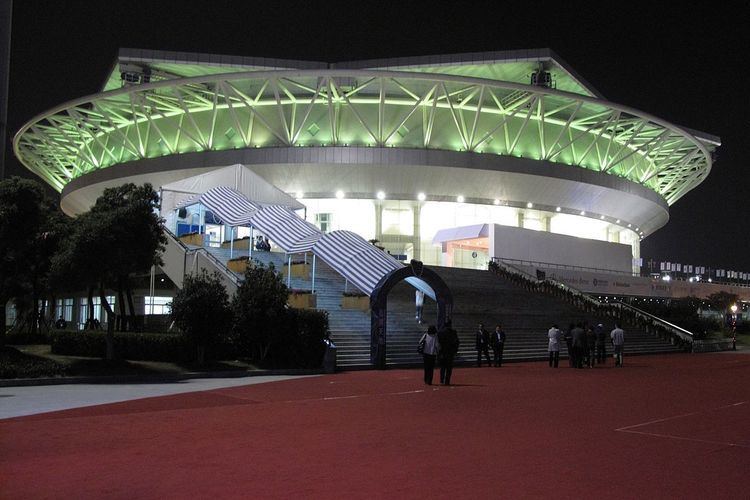Built 2003 Opened 5 October 2005 | Capacity 15,000 Phone +86 21 5498 1888 | |
 | ||
Construction cost RMB ¥ 2.4 billionUSD $ 200 million($245 million in 2017 dollars) Similar Jinshan Sports Centre, Jiangwan Stadium, Shanghai Indoor Stadium, Jinjiang Action Park, Hongkou Football Stadium | ||
The Qizhong Forest Sports City Arena, also known as Qizhong stadium, (pronounced "chee-jong") is a tennis arena in Shanghai, People's Republic of China. The complex is located on an 80-hectare area, in the southwest of Shanghai, the Minhang District.
Contents
It has a steel retractable roof with eight sliding petal-shaped pieces (moved in 8 minutes) which resembles a blooming magnolia, Shanghai's city flower. The roof enables the stadium to host both indoor and outdoor tennis events. The seating capacity is 13,779 people. The stadium was specially created to host the ATP World Tour Finals between 2005 – 2008, and was the largest tennis venue in Asia, until the construction of the Olympic Green Tennis Centre in Beijing.
Since 2009 it has hosted the ATP World Tour Masters 1000, a ATP Masters Series tournament which began that year. It also served as one of the venues used for the NBA's Cleveland Cavaliers and Orlando Magic during their tour of China in 2007.
Stadium features
The Tennis Centre covers a total area of 338,836 square meters, of which 85,000 square meters are made up of structures. The volume rate is 0.187, the building density 15.1%, green/open space 46.1%, with parking capacity of 993 parking spaces. The facility has 25 courts, including three main courts, namely center court, grand stand court 2, and court 3.
During the ATP World Tour Finals event, there was a retail zone, with the public eating/drinking areas outside the stadium.
History
The stadium is located in Ma Qiao Town in southwest Shanghai, the Minhang District. The Shanghai Municipal Commission of Construction and Administration requested international bids in 2003, for building the stadium.
The winning bid was submitted by Japanese architect Mitsuru Senda and his company Environment Design Institute (EDI), an architectural and landscape firm specializing in children's environments including schools, museums, hospitals, sports facilities, parks, play structures, daycare centers, and housing.
EDI had designed sports stadiums in Japan, including the Tokyo Tatsumi International Swimming Center and the Tokoname Municipal Gymnasium. Mr. Senda, a former President and now honorary member of the Architectural Institute of Japan, established EDI in 1968 with a design philosophy to adapt comprehensive planning along with the layout of the environment.
Each leaf, of the roof, was constructed on the ground beforehand. The method of testing each leaf on the ground was similar to that used by China Aerospace, where each roof piece must pass a test, before it can be elevated to its position for final installation.
Other companies involved in the center's construction include:
There will be a total of 40 tennis courts when Phase 2 is completed (Centre Court Stadium, 3 small indoor stadiums, 14 indoor courts and 22 outdoor courts).
